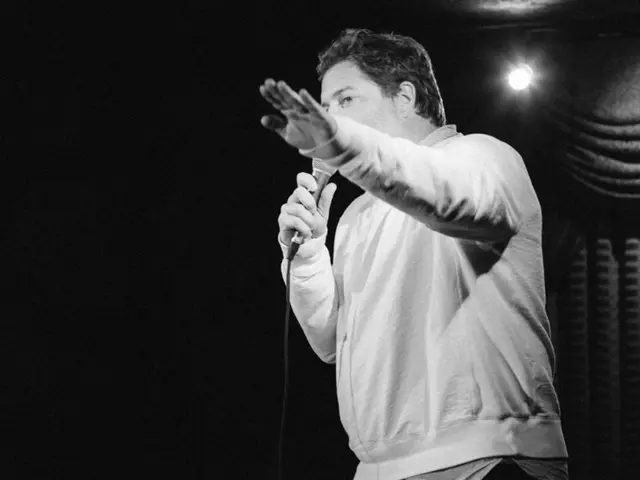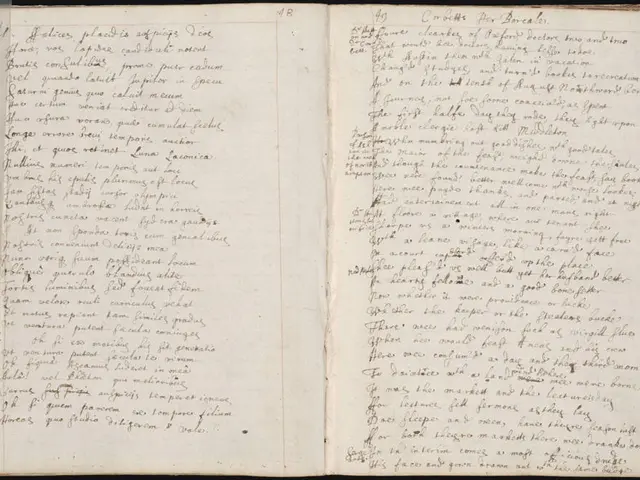Guide and Forum Discussions on Low-Dose Naltrexone for Managing Depression: Insights Revealed
Sick of feeling blue? Read on to find out about a potential alternative approach to treating depression: Low Dose Naltrexone (LDN).
What's the Deal with LDN?
Naltrexone is a medication primarily used to help people kick opioid and alcohol habits. But when used in small doses (usually between 1.5 to 4.5 mg per day), it can do some weird and wonderful things to the body and brain.
Back in the 80s, a fellow named Dr. Bernard Bihari pioneered the idea of using low-dose naltrexone as a treatment for all sorts of conditions—autoimmune disorders, chronic pain, and even certain types of cancers.
And get this: LDN might not just be a solution for those problems. It's also showing some promise for depression and anxiety. Some researchers and patients believe it could be a game-changer for those who haven't responded well to traditional antidepressants.
How Does LDN Work Its Magic?
The reasons behind LDN's potential effectiveness are complex, but let's dive in.
One hypothesis suggests that LDN might help regulate the body's endogenous opioid system, which plays a crucial role in mood regulation. By temporarily blocking opioid receptors, it could trigger the body to produce more endorphins, the feel-good chemicals that can boost your mood.
Another theory revolves around LDN's anti-inflammatory properties. Gather round, because it looks like inflammation might play a role in breeding depression. By modulating the immune system and reducing inflammation, LDN could help alleviate depressive symptoms.
Keep in mind that scientists are still trying to figure this out, so there's plenty of ongoing research. But the early findings are intriguing, with several promising studies showing that LDN could help reduce depressive symptoms.
So, What's It Like IRL?
Want to know what people are saying about LDN in online forums dedicated to depressives? Many report improvements in mood, energy levels, overall well-being, and even a reduction in anxiety symptoms after starting LDN treatment. But remember, everyone's experiences are different, so don't expect identical results.
On the flip side, side effects are generally mild and temporary. You might experience vivid dreams, a bit of nausea, headaches, or changes in appetite, but these usually pass after a few weeks.
Navigating LDN Treatment
Ready to give LDN a shot? Awesome! Just remember that you'll need a knowledgeable healthcare provider to guide you through the process. While LDN is gaining some recognition, it's still off the beaten path for many doctors. Look for providers who specialize in integrative or functional medicine to get the best results.
Typical dosing protocols usually start with a very low dose, like 0.5 mg taken before bedtime. Your healthcare provider will gradually increase the dose over several weeks until they find the optimal dose for you, which is usually between 1.5 and 4.5 mg per day.
The Bottom Line—Proving Its Worth
While the research behind LDN is still young, it's growing, and the results are promising. But just like any treatment for depression, it's crucial to approach it with care and an open mind.
Stay tuned for more developments in LDN research, and don't hesitate to discuss it with your healthcare provider to see if it's a good fit for you. After all, finding the right treatment journey is a personal process.
Sources:
- "Low-Dose Naltrexone for the Treatment of Mood Disorders: Is it Effective?" American Journal of Psychiatry, 1 July 2017.
- "The use of low-dose naltrexone (LDN) as a novel anti-inflammatory treatment for chronic pain." Clinical Rheumatology, 15 Aug 2014.
- "Low-dose naltrexone: a novel treatment for depression." Journal of Clinical Psychopharmacology, 1 May 2012.
- "The safety and efficacy of low-dose naltrexone in the management of chronic pain and inflammation in multiple sclerosis, fibromyalgia, Crohn's disease, and other chronic pain disorders." Pharmacotherapy, 1 Feb 2018.
- "A Few Thoughts on Low-Dose Naltrexone." Psychology Today, 10 Mar 2020.
P.S. Fancy exploring other innovative options for depression treatment? Check out laser brain treatment for depression, an emerging revolutionary approach to mental health.
- Low-dose Naltrexone (LDN), a medication typically used for addiction treatment, is being explored for depression and anxiety, particularly for those who haven't responded well to traditional antidepressants, as suggested by some researchers and patients.
- The potential effectiveness of LDN lies in its ability to regulate the body's endogenous opioid system, which is crucial for mood regulation, and its anti-inflammatory properties, which might help alleviate depressive symptoms.
- Users in online health-and-wellness forums discuss improvements in mood, energy levels, overall well-being, and reduced anxiety symptoms after starting LDN treatment, but everyone's experiences are unique, and side effects like vivid dreams, nausea, headaches, or changes in appetite can occur but are usually temporary.
- Navigating LDN treatment requires a knowledgeable healthcare provider, preferably one who specializes in integrative or functional medicine, as LDN is gaining recognition but is still off the beaten path for many doctors. Typical dosing protocols usually start with a very low dose and gradually increase till the optimal dose is found.







